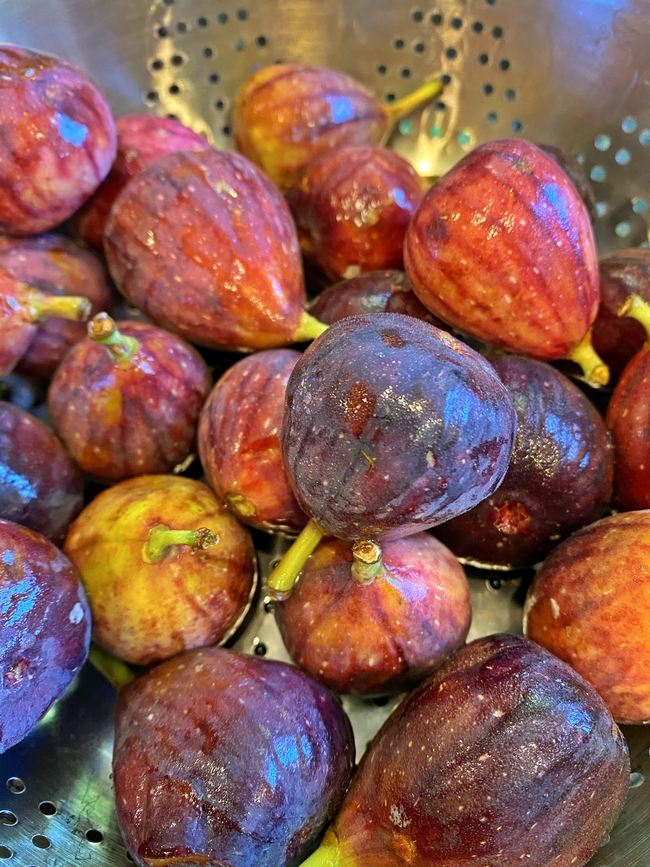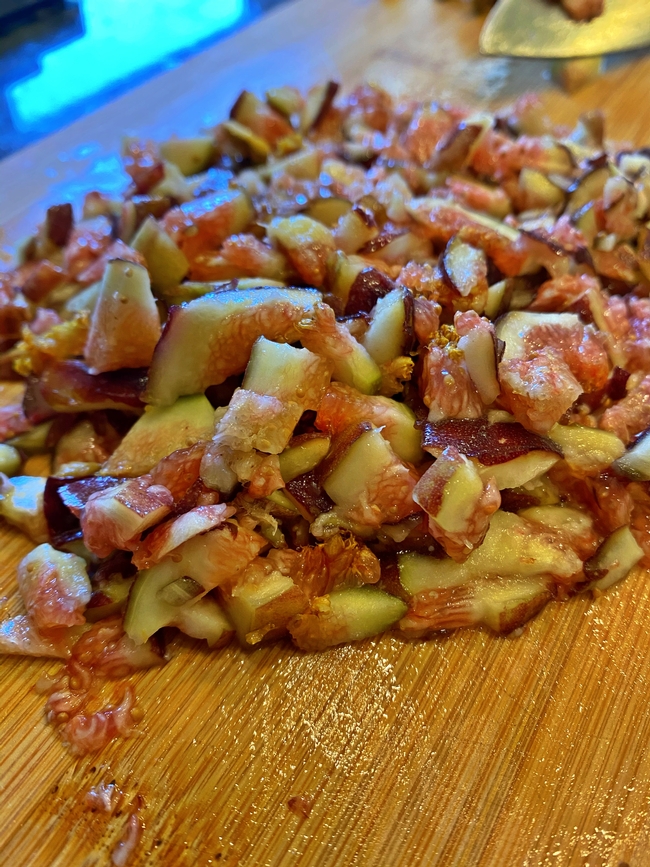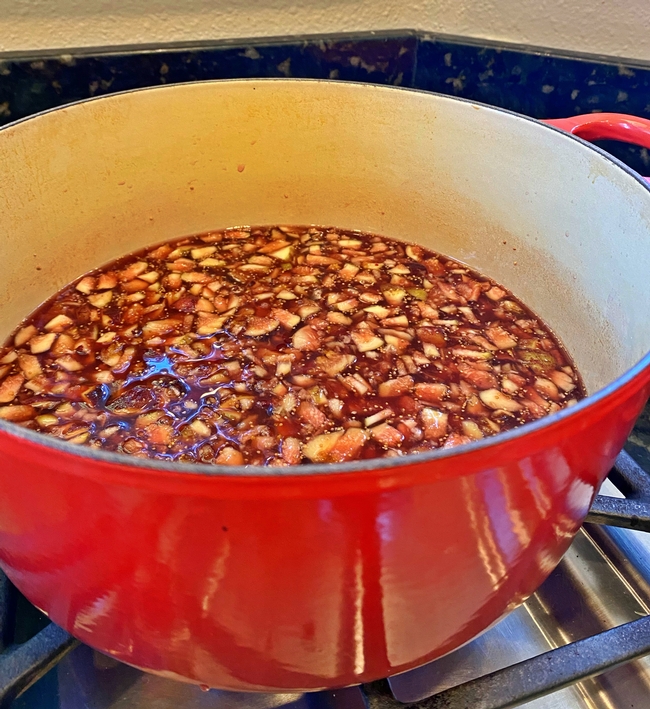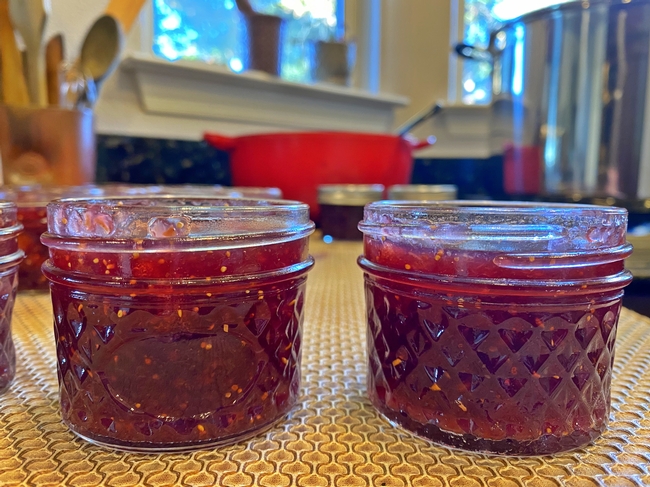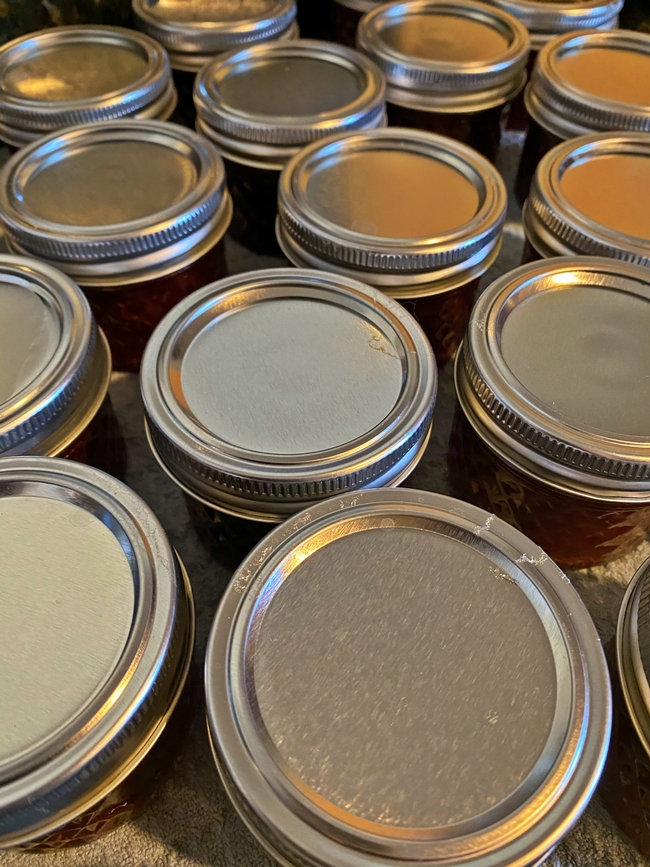Photo credit: Katherine Soule
In the last few months, the UC Master Food Preserver Program in the County of San Luis Obispo has received a couple of donations to support our mission to teach research-based practices of safe home food preservation to the residents of San Luis Obispo County. In one instance, a local community organization donates several cases of wine as the COVID-19 pandemic meant they would not be able to use the wine at any events this year. Last week, we received quite a few pounds of figs that otherwise would have been treated as food waste. With these donations, we knew the perfect recipe to make: Rosemary, Fig, and Red Wine Jam a safe, home-based recipe from Ball®.
The first step was to sort and clean the figs. Figs that were spoiled were composted. The rest of the figs were washed, wiped with clean towels, and then destemmed. Fig skin is very thin, so I did not scrub them with a vegetable brush.
Since we had so many figs, I decided to make 4 batches of jam. The second step was to harvest and wash the whole rosemary leaves, after removing them from the stems. I brought two tablespoons of rosemary leaves and half a bottle of red wine to a simmer. The herbaceous and berry scents filled the kitchen with an invigorating fragrance, which I enjoyed while moving on to prepare the figs.
Photo credit: Katherine Soule
The recipe indicated that the figs needed to be finely chopped. I was surprised at how long it took to chop the figs for the first batch. Once I completed this first batch of jam, I also realized that I had chopped them larger than desired.
So for the next batch, I decided to use a food processor, making the chopping much faster and providing a more consistent result. After cutting the figs, I moved them into a large enameled pot on the stove, adding pectin, and bottled lemon juice, which I brought to a vigorous boil. The lemon juice is an important ingredient in this fig-based recipe to ensure that there is enough acid to make the product safe to consume after canning.
Photo credit: Katherine Soule
Then I measured the sugar. With this large volume of sugar, the jam would make a wonderful seasonal treat rather than as a daily complement to breakfast. While I brought the mixture back to a boil, I started to pull the canning jars out of the boiling water canner, so they would be hot when I added the jam.
Photo credit: Katherine Soule
Since this jam has so much sugar, the jars were very sticky after I filled them. I cleaned all the rims and the sides of the jars with a warm wet towel. Then, I added the lids and hand tightened the rings. To save energy and time, I used an atmospheric steam canner following the processing time in the recipe.
Photo credit: Katherine Soule
After pulling the jars out of the canner, I left them to set undisturbed for 24 hours. The next day, I took off the rings and checked the seals on all the jars. Two of the jars did not seal, so I cleaned the jar rims and replaced with new lids and rings. Then, I re-processed these two jars in the atmospheric steam canner for a second time. They still did not seal, so I stored them in the fridge.
These jams would make a lovely thank you gift or holiday present. The recipe suggests pairing the jam with blue cheese, which sounds delicious on homemade sourdough crackers. You can find this jam recipe on the Ball® website freshpreserving.com.
Editor - Master Food Preserver Program Coordinator
